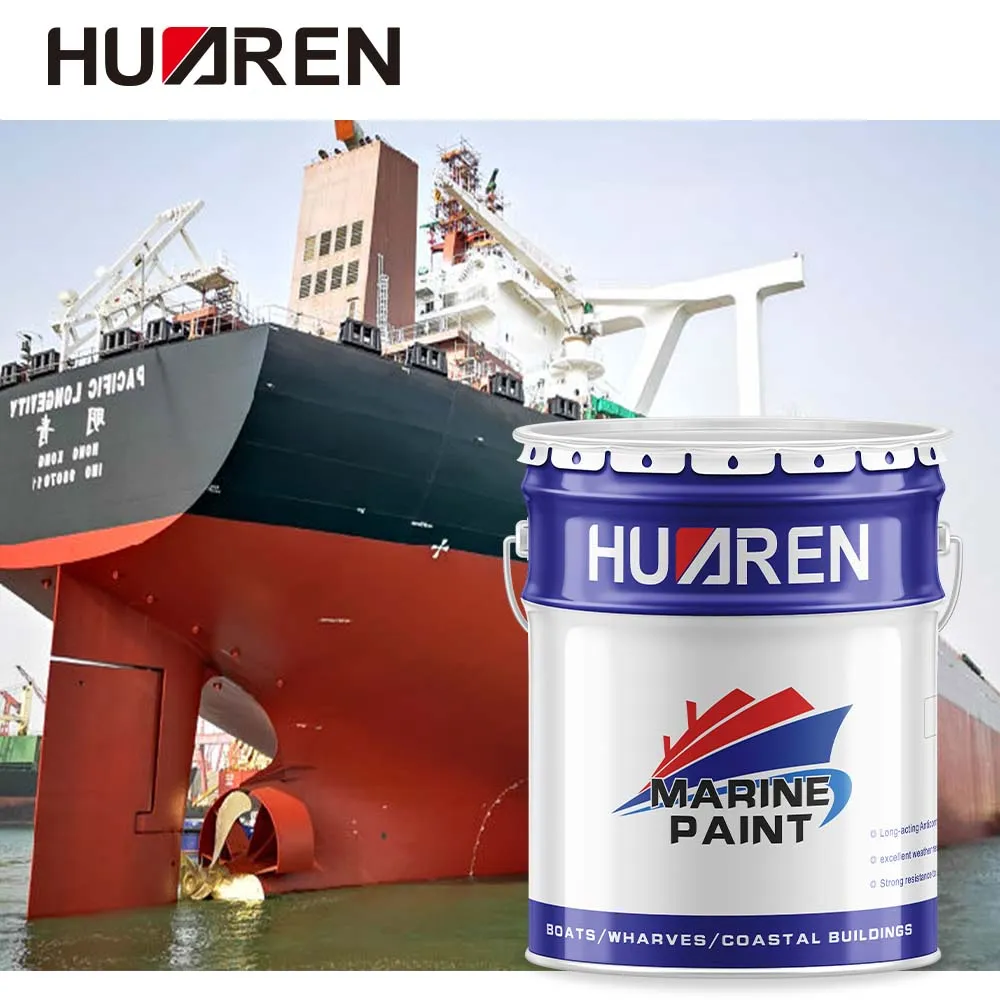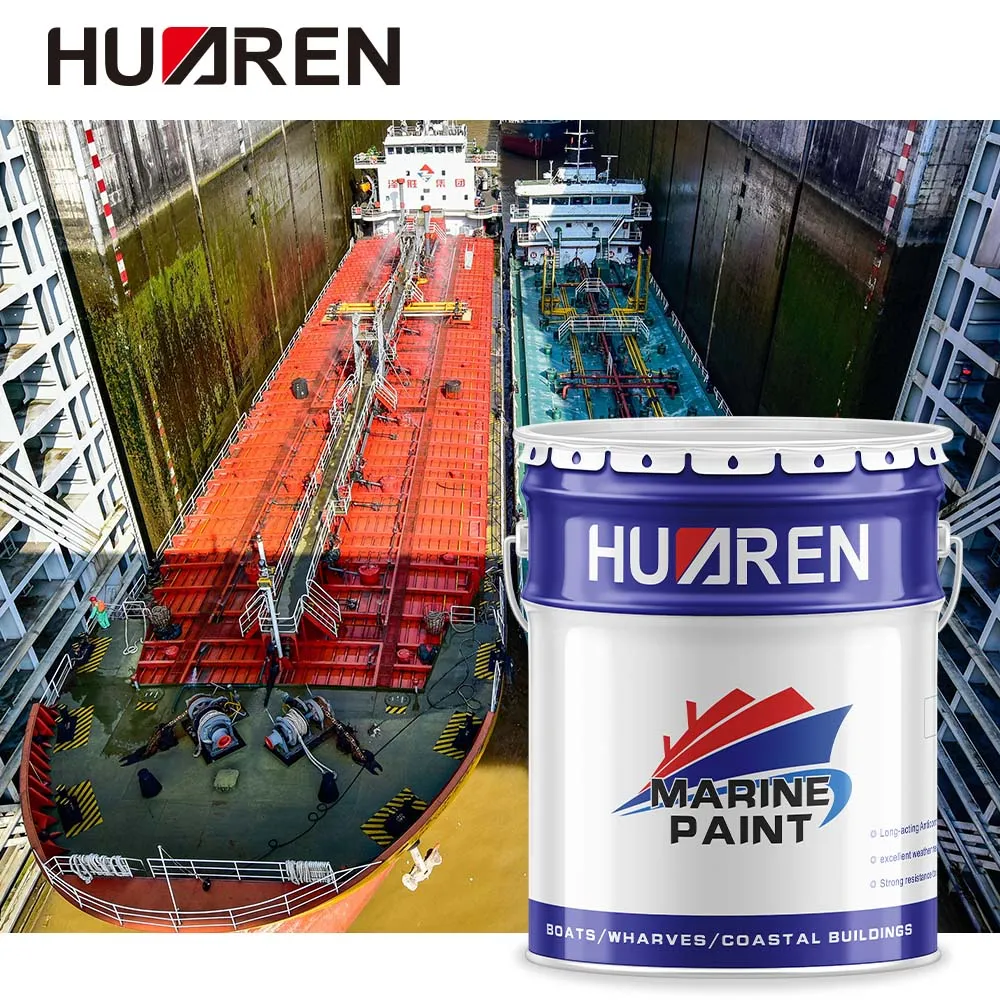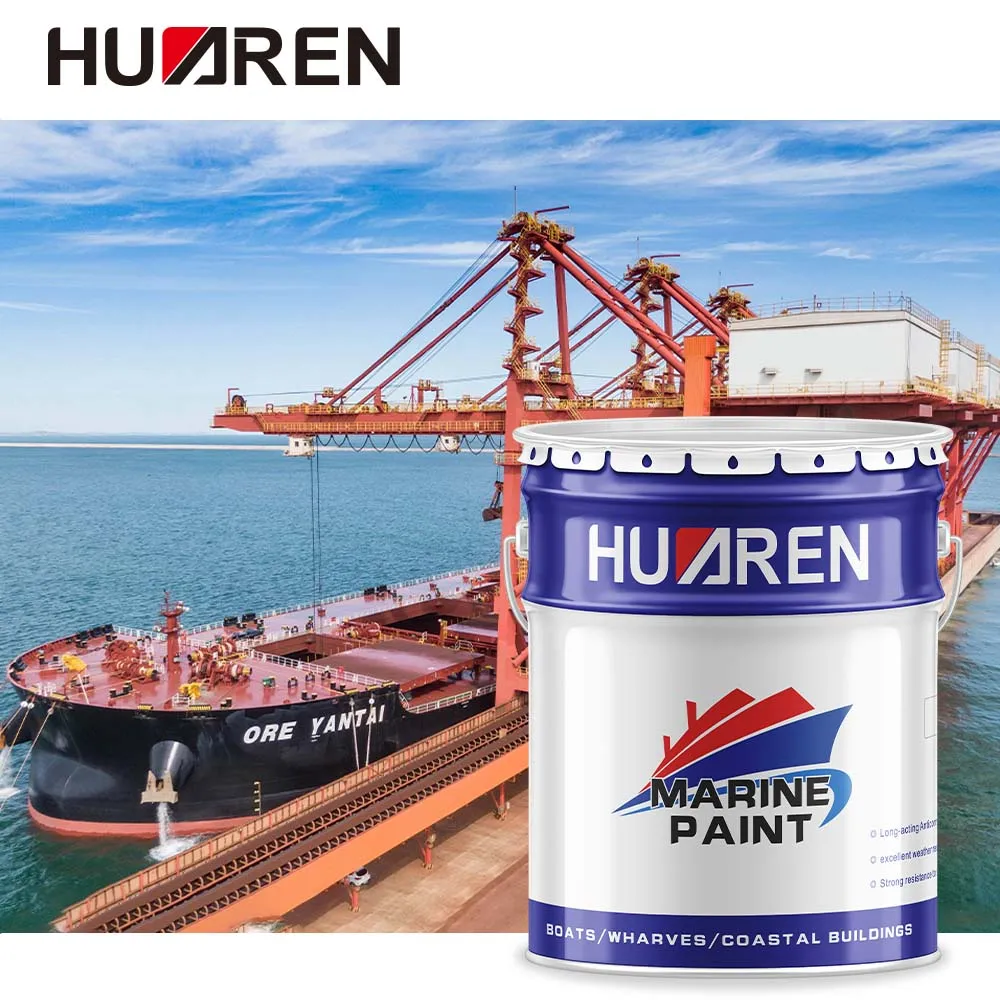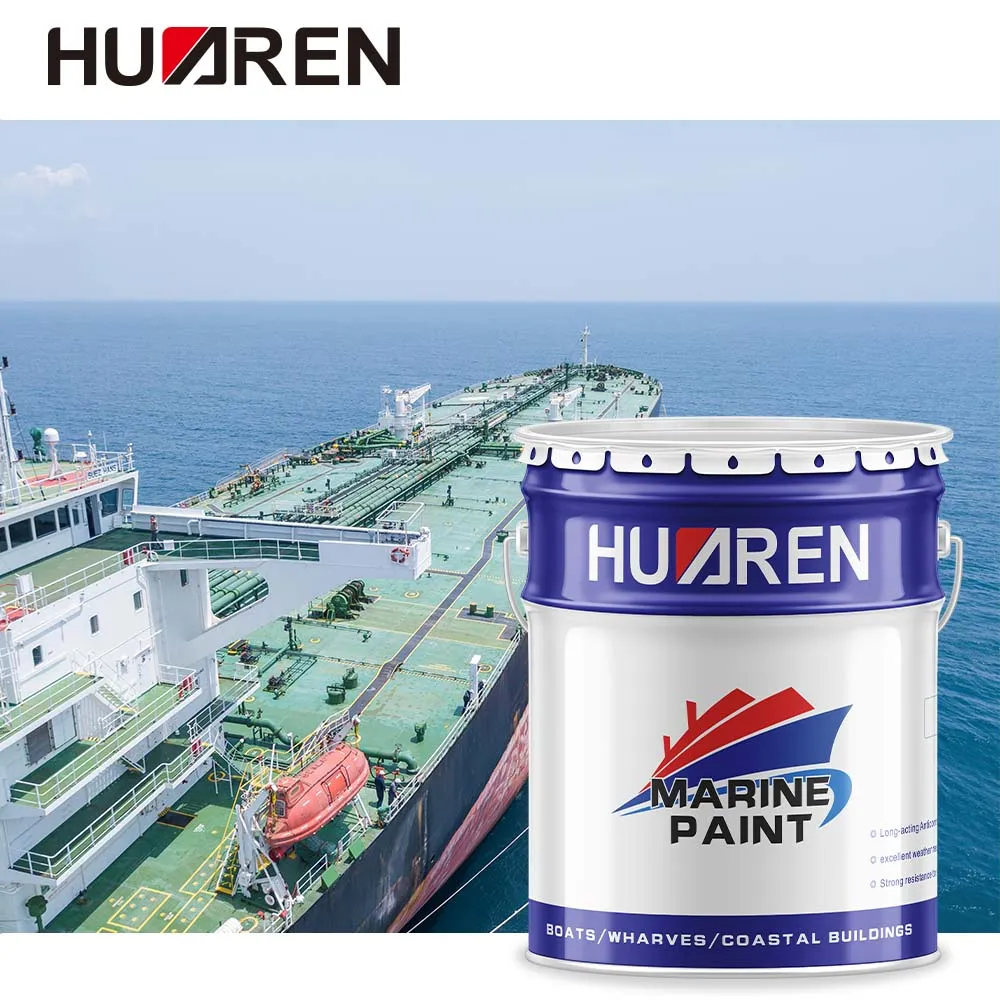In the marine environment, ships are immersed in seawater for a long time, and the underwater part of the hull is easily attached by barnacles, algae and other marine organisms. These organisms not only increase the resistance of the hull, leading to increased fuel consumption, but may also cause corrosion and accelerate the aging of the hull. In order to meet this challenge, antifouling paint has become an indispensable part of ship maintenance.
So, what is antifouling paint? Is antifouling paint a bottom paint? This article will explore these questions in depth and provide readers with clear answers.

What is antifouling paint?
Antifouling paint, as the name suggests, is a paint specially used to prevent dirt from attaching. It is mainly applied to the underwater part of the hull, and special chemical ingredients are used to inhibit or prevent marine organisms from attaching to the surface of the hull. The main functions of antifouling paint include the following aspects:
Preventing biological attachment
Marine organisms, such as barnacles, algae and mollusks, are easy to attach to the underwater part of the hull. After these organisms attach, they will form a thick "fouling layer", which increases the navigation resistance of the ship, thereby increasing fuel consumption. Antifouling paint releases trace amounts of toxic substances or changes the physical properties of the surface, making it difficult for these organisms to attach to the hull, thereby effectively reducing the resistance of the hull.
Reduce fuel consumption
Because antifouling paint can reduce the attachment of organisms on the hull surface, the resistance encountered by the ship during navigation is reduced, allowing the ship to maintain a higher speed with lower energy consumption. This not only saves fuel costs, but also reduces greenhouse gas emissions, with important economic benefits and environmental value.
Extend the life of the hull
After marine organisms attach to the surface of the hull, they are prone to pitting and other forms of corrosion, resulting in damage to the hull structure. Antifouling paint can effectively extend the service life of the hull and reduce the frequency of maintenance and repairs by reducing biological attachment and preventing corrosion.
Improve the navigation efficiency of ships
A clean hull surface can maintain a lower water flow resistance, making the ship more stable and efficient during navigation. The application of antifouling paint can ensure the best performance of the ship and ensure maximum navigation efficiency.

What types of antifouling paint are there?
There are many different ingredients and types of antifouling paints. Common antifouling paints are mainly divided into three categories: self-polishing antifouling paints, hard antifouling paints, and environmentally friendly antifouling paints. Each type of antifouling paint has its own unique ingredients and applicable scenarios.
Self-polishing antifouling paint
Self-polishing antifouling paint is a highly efficient antifouling paint with self-polishing properties. During the voyage of the ship, the coating surface will gradually wear and release active ingredients to inhibit the attachment of marine organisms. The advantage of this antifouling paint is that it can keep the surface of the hull smooth and reduce resistance while providing a continuous antifouling effect, which is suitable for ships that sail for a long time.
Hard antifouling paint
Hard antifouling paint is a paint that is not easy to wear. Its surface is relatively hard and can withstand greater mechanical impact and wear. This antifouling paint inhibits biological attachment through active ingredients on the surface. It is usually suitable for ships sailing at high speeds, such as speedboats and racing boats. In addition, hard antifouling paint can also provide a certain antifouling effect during mooring, which is suitable for ships that are moored for a long time.
Eco-Friendly Antifouling Paint
With the increasing awareness of environmental protection, eco-friendly antifouling paint has gradually attracted attention. This type of antifouling paint does not contain harmful substances and mainly changes the physical properties of the hull surface, such as super-hydrophobic surface or low surface energy coating, making it difficult for marine organisms to attach. This type of antifouling paint is usually suitable for areas with high environmental protection requirements or environmentally sensitive ships, such as scientific research ships and yachts.

Is antifouling paint a primer?
After understanding the definition and function of antifouling paint, we need to answer a key question: Is antifouling paint a primer? To answer this question, we first need to clarify the definition and purpose of primer.
1. What does primer mean?
Primer is a coating used for the bottom layer of the coating system, mainly used to enhance the adhesion of the substrate to subsequent coatings, while providing initial protection. Primer is usually applied to bare metal, wood or other substrates to provide a flat and stable foundation for topcoat or intermediate coating. The main functions of primer include:
● Enhance adhesion: Primer can improve the adhesion between the substrate and subsequent coatings and prevent the topcoat from flaking or delaminating.
● Seal the substrate: Primer can seal the pores on the surface of the substrate to prevent the penetration of moisture, air and other corrosive substances, and play an anti-corrosion role.
● Provide initial protection: Primer can provide initial protection to reduce the damage caused by direct exposure of the substrate to the environment.
2. Antifouling paint vs. primer: What is the difference?
Although antifouling paint and primer are both part of the coating system, they have significant differences in function, position and role.
Different functional positioning
The main function of antifouling paint is to prevent marine organisms from attaching to the underwater part of the hull, thereby reducing hull resistance, reducing fuel consumption, and extending the life of the hull.
The main function of primer is to enhance the adhesion between the substrate and subsequent coatings, provide initial protection, and provide a flat and stable foundation for the topcoat or intermediate coating.
Different coating positions
Antifouling paint is usually applied to the underwater part of the hull. As the last line of defense of the coating system, it is directly exposed to seawater and plays an antifouling and anticorrosion role.
Primer is usually applied to the exposed substrate surface as the first layer of the coating system, providing a basis for subsequent topcoats or intermediate coatings.
Different mechanisms of action
Antifouling paint inhibits the attachment of marine organisms by releasing active ingredients or changing the physical properties of the surface, and mainly plays a role in protecting the hull surface.
Primer ensures the overall performance of the coating system by enhancing adhesion, sealing the substrate and providing preliminary protection, and mainly acts on the interface between the substrate and the subsequent coating.
In summary, although antifouling paint and primer both play an important role in the coating system, their functions, positions and mechanisms of action are clearly different. Therefore, it can be clearly said that antifouling paint is not primer. Antifouling paint is mainly used to prevent marine organisms from attaching to the hull surface, while primer is used to enhance the adhesion of the substrate to the subsequent coating and provide preliminary protection.

Application and maintenance of antifouling paint
After understanding the role of antifouling paint and its difference from primer, it is also crucial to understand how to properly apply and maintain antifouling paint.
Coating steps
● Surface preparation: Make sure the surface of the hull is clean, free of grease and impurities. If there is old paint or rust on the surface, it needs to be polished and cleaned.
● Primer coating: If the substrate is metal or other corrosive materials, it is recommended to apply a layer of primer first to enhance adhesion and anti-corrosion effect.
● Antifouling paint coating: After the primer is dry, apply antifouling paint evenly. The coating thickness should be controlled according to the type of antifouling paint and the manufacturer's recommendations.
Regular inspection and maintenance
● Regular inspection: The antifouling paint layer of the hull should be inspected after each ship sails or enters the port. The inspection content includes the integrity of the paint layer, whether there is peeling or wear, and whether there is marine organisms attached. If the paint layer is damaged or biological attachment is found, it should be handled in time to avoid affecting the protective effect.
● Cleaning and maintenance: During the period when the ship is at anchor, the hull should be cleaned regularly to remove attached dirt and organisms to reduce the burden on the antifouling paint layer. In addition, regular coating maintenance or re-coating of antifouling paint can be considered to maintain the best protective effect.
● Adjust the coating cycle: Adjust the coating cycle according to the usage and type of antifouling paint. Some antifouling paints may need to be re-coated every year, while some high-performance antifouling paints may be re-coated every two years or more. Follow the manufacturer's recommendations and maintenance guidelines to ensure the best effect of antifouling paint.
Established in 1994, Huaren Chemical Industry Co., Ltd. is a modernized company integrating research, production, and sales. Our expertise lies in manufacturing industrial paints and resins, including phenolic coatings, waterborne paints, and epoxy floor coatings. With 30 advanced paint production lines and 6 resin lines, our annual production exceeds 20,000 tons, making us a reliable supplier for bulk purchasing and wholesale requirements. Our products are widely used in shipbuilding, petrochemicals, and steel structures, ensuring durability and high performance. We offer competitive prices, custom manufacturing options, and attractive factory promotions. Huaren’s market presence spans Africa, India, Southeast Asia, and Europe, delivering cost-effective solutions to our clients worldwide. Contact us today for tailored quotes, discounts, and high-quality products that meet your specific needs.

